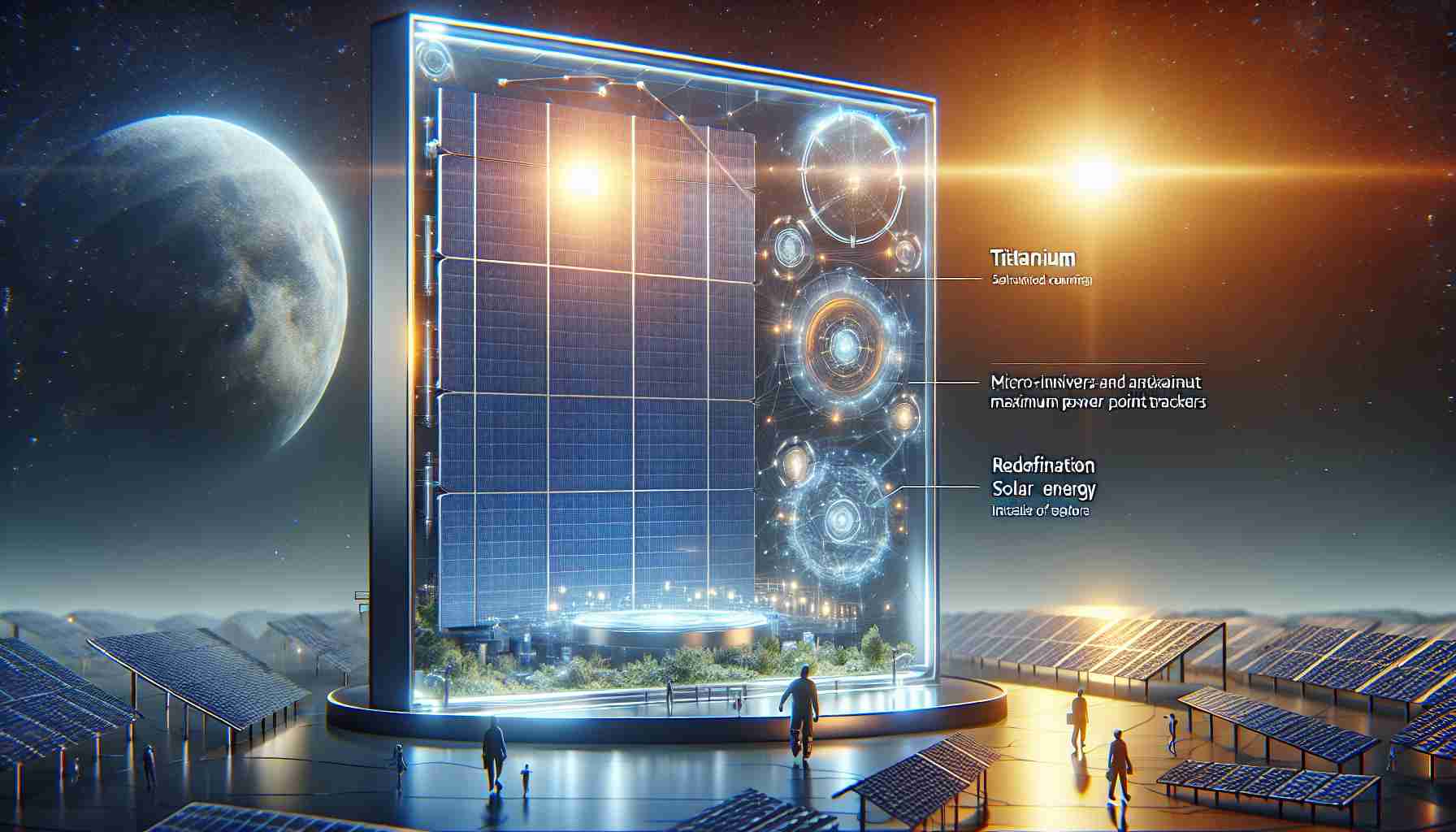A Breakthrough in Solar Panel Technology
A groundbreaking discovery has emerged in the field of solar energy with the introduction of a titanium solar panel that boasts a remarkable 1,000-fold increase in efficiency. Unlike traditional solar panels, this innovative panel comprises 500 layers of advanced materials, offering a futuristic solution for harnessing solar power in homes.
Shifting Away from Silicon
In a departure from conventional silicon-based solar cells, researchers are exploring alternative materials that promise enhanced efficiency and longevity. The Titanium solar panel, developed by experts at the University of Martin Luther in Halle-Wittenberg (MLU), showcases the potential of superlattice structures composed of barium titanate, strontium titanate, and calcium titanate.
The Power of Superlattice Structures
Superlattice structures involve stacking nanoscale layers of different conductive materials, creating a sophisticated electronic device capable of maximizing solar energy conversion. By leveraging the unique properties of ferroelectric and paraelectric materials, the MLU team has successfully amplified the photovoltaic effect, propelling the efficiency of the titanium panel to unprecedented levels.
Paving the Way for the Future
Besides its remarkable efficiency boost, the titanium solar panel presents additional advantages. The cost-effective nature of the ferroelectric materials used in its composition, coupled with exceptional durability outperforming traditional materials like perovskites, signifies a potential paradigm shift in the solar energy industry.
A New Era for Solar Power
This breakthrough holds the promise of revolutionizing the solar energy sector, driving towards a future where solar power could dominate global energy production by 2050. While further research is required before the commercialization of these advanced panels, this discovery signals a significant step forward in enhancing renewable energy efficiency and sustainability.
Spain’s Solar Energy Enthusiasm
Spain, a leading advocate for renewable energy adoption, has witnessed a surge in solar power generation, with renewables contributing over 50% of electricity production consistently throughout the year. With solar energy accounting for 18.3% of total electricity production, Spain’s trajectory aligns closely with the National Energy and Climate Plan (PNIEC) target of achieving 81% renewable electricity generation by 2030.
Redefining Solar Energy with Titanium Solar Panels: Unveiling Key Insights
With the advent of titanium solar panels heralding a new era in solar energy, there are several fascinating aspects and questions surrounding this revolutionary technology that merit exploration.
What distinguishes titanium solar panels from traditional silicon-based panels?
Titanium solar panels, with their superlattice structures comprising barium titanate, strontium titanate, and calcium titanate, offer a significant departure from conventional silicon-based solar cells. These advanced materials not only promise enhanced efficiency but also boast exceptional durability and cost-effectiveness, setting them apart as a game-changer in the solar industry.
What are the key challenges associated with the widespread adoption of titanium solar panels?
Despite the impressive efficiency gains and potential cost savings offered by titanium solar panels, challenges such as large-scale manufacturing scalability, compatibility with existing infrastructure, and long-term performance sustainability remain key areas of concern. Overcoming these hurdles will be crucial in ensuring the seamless integration of titanium panels into mainstream solar applications.
Advantages and Disadvantages of Titanium Solar Panels:
– Advantages:
1. Unprecedented efficiency levels: Titanium panels offer a remarkable 1,000-fold increase in conversion efficiency compared to traditional panels.
2. Cost-effectiveness: The utilization of ferroelectric materials in the panel’s composition brings down production costs.
3. Enhanced durability: Titanium panels outperform traditional materials like perovskites in terms of longevity and resilience.
– Disadvantages:
1. Manufacturing challenges: The complex superlattice structures require specialized manufacturing processes, which may impact scalability and cost.
2. Integration complexities: Adapting existing solar infrastructure to accommodate titanium panels may pose logistical challenges.
3. Performance sustainability: Long-term performance and degradation rates of titanium panels need to be rigorously evaluated for real-world applications.
In essence, while titanium solar panels hold immense promise in reshaping the solar energy landscape, addressing these challenges and controversies will be crucial in unlocking their full potential and ensuring a smooth transition towards widespread adoption.
For further insights and information on the evolving realm of solar energy technologies, you can visit Energy.gov for comprehensive resources and updates in the renewable energy domain.
